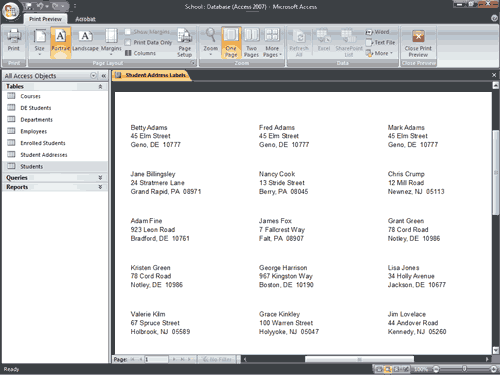



The “Columns” property, available in the object inspector for all data bands, is another way to set the number of columns. Our two column report should look like this: When all of the columns have been filled then FastReport creates a new page and continues displaying data starting in the first column again. When the second column has been filled then a third column is created, and so on - our example only has two columns though. After that, a new column on the same page is created and data bands continue repeating from the top of the new column : this contrasts with simple reports, where a new page is created instead of a new column. FastReport repeats the “First level data” band as long as there is white space at the bottom of the page. The report is now created in the following way. The column frame is displayed in the designer as a thin vertical line: In our example only the Number needs to be set at 2, as FastReport adjusts the other options automatically. The column count, width and positions are set on the "Other options" tab in the dialogue. To do this either double-click on the white space on the design page or use “File>Page Settings.” on the menu. To make use of the whole page the number of columns in which data is displayed can be set in the report page settings. Notice there is a lot of blank space on the right side of the page. When previewed we would see the following output: The report data is presented as a label and has the following structure: Let's look at an example of this kind of report which displays data about fish, as in the previous example. In contrast to table-type reports, other reports (such as label printing reports) may have the data arranged one field under another.


 0 kommentar(er)
0 kommentar(er)
